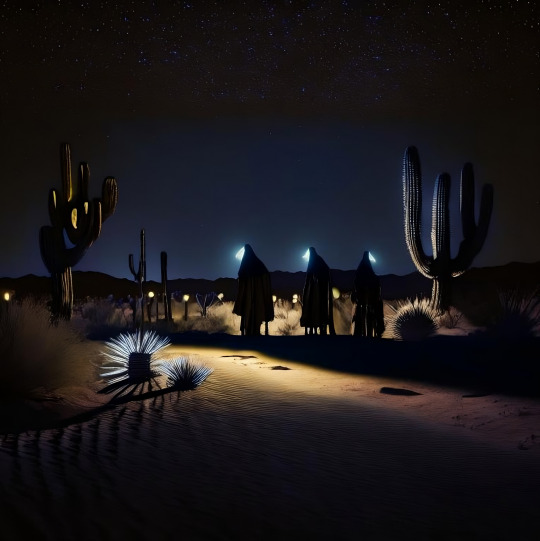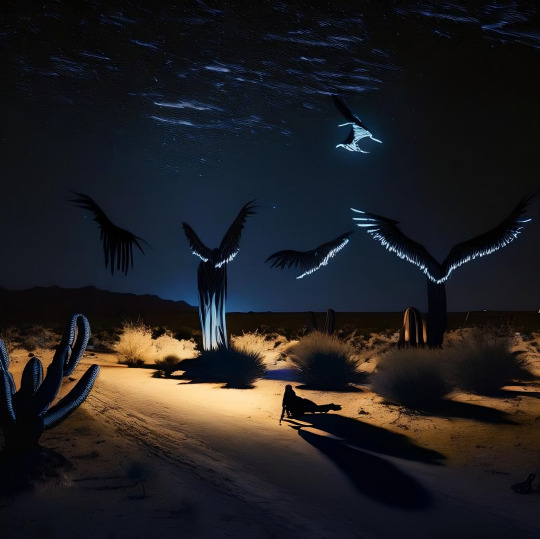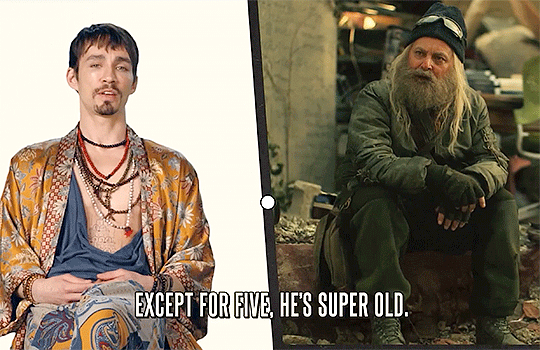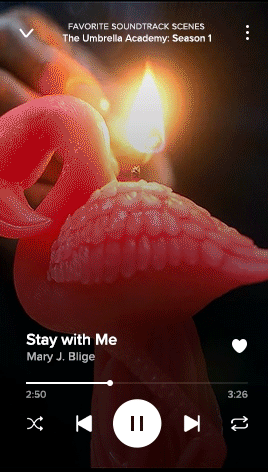#Castaneda
Explore tagged Tumblr posts
Text
“We either make ourselves miserable, or we make ourselves strong. The amount of work is the same.” ― Carlos Castaneda
55 notes
·
View notes
Text
Nagualism


Nagualism Nagualism with the subtitle - A Study in Native American Folklore and History - must have been the raw material from which Carlos Castaneda wrote his books on Yaqui sorcery. It was written by Danial G. Brinton and read before the American Philosophical Society in 1804. His respect and descriptions of the tribes, their visions and beliefs suggests that he might have tasted the little smoke or similar compounds himself. Download the classic Public Domain work on the native american shamanism known as Nagualism here:

Nagualism
What is Nagualism?
Nagualism, often associated with Mesoamerican indigenous traditions, is a complex spiritual and philosophical system that revolves around the concept of the "nagual." The term "nagual" can refer to a person who possesses the ability to transform, either spiritually or physically, into an animal or other form. This transformation is not merely a physical change but represents a deeper spiritual journey and connection to the natural and supernatural worlds. Rooted in pre-Columbian cultures, particularly among the Nahuatl-speaking peoples like the Aztecs, Nagualism has been intertwined with local beliefs and practices for centuries. Over time, it has been influenced by and has influenced other spiritual systems, resulting in a rich tapestry of traditions and interpretations. While Nagualism is often sensationalized in popular culture, it remains a deeply spiritual practice for many indigenous communities in Mesoamerica, emphasizing harmony with nature, personal transformation, and the interconnectedness of all beings. Read the full article
26 notes
·
View notes
Text

(From left to right you can see the progression from a rudimentary painting aesthetic to a standard digital art painting to one that has more realism applied, the Thai pepper.)

different kinds of robots
2 notes
·
View notes
Text




The Sonorans (Haunted area)
5 notes
·
View notes
Text
Path With Heart - Toltec Path Series
Rooted in the idea of life as a sacred journey, the philosophy of the Toltec Path as brought to us via people such as Carlos Castenda, Victor Sanchez and Don Miguel Ruiz, emphasises personal freedom, self-mastery, and the art of living in harmony with the world. Their teachings invite individuals to awaken from the illusions of fear, ego, and societal expectations and instead embrace a life of authenticity and purpose.
At the heart of these teachings lies the concept of the "path with heart." This idea is more than a metaphor; it is a guiding principle for how one should approach life. According to the Toltec tradition, the path with heart is not necessarily the easiest or most obvious route but the one that resonates deeply with the soul. It is a path that aligns with one’s innermost values, brings joy and vitality, and fosters a sense of connection to the greater whole. Choosing and walking this path is a central tenet of Toltec spirituality, as it leads to true fulfilment and personal freedom.
In this article, we will delve into the meaning, significance, and practical application of the path with heart. By exploring its roots in Toltec philosophy, its relevance to modern life, and the challenges inherent in living authentically, we aim to illuminate how this timeless concept can serve as a powerful compass for navigating the complexities of existence. Through reflection on this wisdom teaching, we can better understand how to create lives that are not only meaningful but also deeply aligned with the truth of who we are.
Over the next several months I will be exploring some of the various concepts found within the Toltec Path. Various aspects of the Path such as Not-Doing, Controlled Folly, and Impeccability, which can be incredibly confusing for someone trying to understand the meaning behind the concepts, will be examined and discussed in depth each month.
Understanding the Path with Heart
The "path with heart" is a profound and poetic concept at the core of Toltec philosophy. At its essence, it refers to a life journey that is aligned with one’s true nature and deepest purpose. It is the path that feels right—not in a superficial or fleeting way, but in a manner that resonates with the core of one’s being. The path with heart is not necessarily the easiest or most straightforward route, but it is the one that brings a sense of joy, fulfilment, and authenticity. It invites individuals to live in harmony with their inner truths, fostering a life that is both meaningful and transformative.
Choosing the path with heart means moving beyond mere survival or adherence to external expectations. It requires a deep connection to one’s values and a willingness to pursue what genuinely matters, even in the face of challenges. This path does not promise a life free of difficulty, but it ensures that the struggles encountered are worthwhile, leading to growth and a sense of purpose. In walking the path with heart, one engages fully with life, finding beauty and significance even in the mundane.
Recognising the path with heart relies on intuition and inner wisdom. Unlike decisions based solely on logic, societal norms, or fear, the path with heart is discerned through a quiet, inward knowing. Intuition acts as a compass, pointing towards choices and experiences that feel deeply right, even if they defy conventional logic or expectations. Cultivating this intuition involves listening to the subtle signals of the heart and soul—feelings of lightness, clarity, or enthusiasm that arise when one is aligned with their true purpose. It is a process of learning to trust oneself, embracing the vulnerability of stepping into the unknown with faith in one’s inner guidance.
In stark contrast, many people find themselves walking paths that are driven by fear, ego, or societal expectations. These paths may seem safe, practical, or prestigious on the surface, but they often lack the vitality and resonance of a path with heart. A path driven by societal expectations might involve pursuing a career, relationship, or lifestyle simply because it is deemed acceptable or desirable by others. Similarly, paths driven by ego might prioritise external validation or material success over inner fulfilment. Fear-based paths, on the other hand, are rooted in the desire to avoid risk, failure, or discomfort, leading to choices that feel stagnant or hollow.
The Toltec teachings challenge us to examine these influences and question whether they serve our higher purpose. They remind us that walking a path without heart can lead to dissatisfaction, disconnection, and regret, no matter how outwardly successful or comfortable it may appear. The path with heart, by contrast, invites us to live boldly and authentically, embracing the adventure of life with open eyes and an open heart. It is a call to align our actions with our essence, finding a sense of harmony that transcends the ordinary and leads to a life of profound meaning.
The Philosophical Foundations of the Path with Heart
The Toltec concept of the "path with heart" is deeply rooted in their philosophical worldview, which perceives life as a dream. According to Toltec teachings, the world we experience is not an absolute reality but a personal creation shaped by our perceptions, beliefs, and agreements. This dream-like quality of existence suggests that we have the power to transform our lives by consciously reshaping our inner world. At the core of this philosophy is the pursuit of personal freedom—the freedom to break away from limiting beliefs, societal conditioning, and illusions that keep us trapped in fear or dissatisfaction. Walking the path with heart is an essential part of this journey, as it involves awakening to our authentic selves and living in alignment with our deepest truths.
Self-awareness and mindfulness are fundamental tools in recognising and choosing the path with heart. Self-awareness requires an honest examination of one’s desires, motivations, and actions, while mindfulness fosters a moment-to-moment connection with one’s experiences. Together, these practices enable us to discern whether the path we are on resonates with our true essence or is shaped by external influences. Without self-awareness, we risk being swept along by the tides of habit or societal expectation, losing sight of what truly matters. Mindfulness, meanwhile, allows us to remain present, noticing when we stray from our authentic path and gently guiding ourselves back.
In the Toltec tradition, choosing the path with heart is closely tied to the concept of impeccability. Impeccability, in this context, does not imply perfection but rather the act of living with integrity and awareness. To be impeccable is to take responsibility for one’s actions, to align words and deeds with one’s values, and to do one’s best in every moment. Walking the path with heart requires this commitment to impeccability, as it involves making choices that honour one’s essence, even when they are challenging or counter to societal norms.
Impeccability also extends to the way we use our energy. The Toltec teachings suggest that we have a finite amount of energy available to us each day and spending it on paths that lack heart—whether through fear, resentment, or self-doubt—drains us. In contrast, when we walk the path with heart, our energy is used wisely, and we are revitalised by the sense of purpose and alignment this path brings. Impeccability, therefore, is not merely a moral principle but a practical strategy for living a life of vitality and meaning.
Through the lens of Toltec philosophy, the path with heart is not simply a choice but an ongoing practice of awareness, courage, and impeccability. It is a call to awaken from the dream of fear and conformity, to see life as a dynamic creation, and to walk boldly toward the freedom of living as one’s truest self. By embracing this path, we honour the sacredness of our journey and contribute to the greater harmony of existence, living in a way that resonates not only with our own hearts but with the rhythm of the universe itself.
Practical Application: Walking the Path with Heart
The concept of the "path with heart" may seem abstract at first, but it is fundamentally a guide for how to live meaningfully and authentically. To walk this path requires both reflection and action, as well as the courage to make choices that honour one’s true essence. Identifying the path with heart begins with self-discovery, an ongoing process of uncovering what brings joy, fulfilment, and alignment with one’s inner values.
Reflection is a vital first step in recognising the path with heart. It invites us to turn inward and examine our lives with honesty and clarity. Asking simple but profound questions can illuminate whether we are living authentically: Does this bring me joy? Does this align with my values? Does this feel right deep within me? Joy, in this context, is not limited to fleeting pleasure or surface-level happiness but refers to a deeper sense of vitality and connection. Similarly, alignment with one’s values signifies a harmony between actions and the principles that matter most to us. When we reflect on these questions, the answers often reveal whether a particular path is resonant and meaningful or whether it is draining and inauthentic.
However, identifying the path with heart is only part of the process. Walking this path requires the courage to let go of what does not serve us, even when doing so is difficult. Often, we find ourselves stuck on paths that lack heart because of external pressures, such as societal expectations, familial obligations, or the fear of disappointing others. We may also hesitate to leave paths we have invested significant time, energy, or resources into, even when they no longer resonate with our true selves. This is where courage becomes essential: the courage to release what no longer aligns, to face uncertainty, and to trust in the process of seeking a more authentic way forward.
Letting go is not an act of failure but of liberation. It is a recognition that clinging to paths without heart only deepens dissatisfaction, while stepping into the unknown opens the possibility for growth and renewal. The Toltec teachings remind us that while the path with heart may challenge us, it also revitalises us, offering a sense of meaning and connection that is worth the effort.
Discipline and consistency are equally important in staying true to the path with heart. Even once the path has been identified, life is filled with distractions and challenges that can pull us away from it. Discipline involves the daily practice of returning to the path, even when it is inconvenient or difficult. This might mean setting aside time for reflection, prioritising activities that nurture the heart, or saying no to opportunities that feel misaligned. Consistency reinforces the commitment to living authentically, creating a rhythm that keeps us grounded in our purpose.
Walking the path with heart is not about achieving perfection or avoiding mistakes. It is an ongoing journey that requires self-compassion, adaptability, and perseverance. Some days, the path may feel clear and vibrant, while on others, it may feel obscured or uncertain. What matters is the intention to keep moving forward, to listen to the heart’s quiet guidance, and to choose, again and again, the life that feels true. In this way, the path with heart becomes not only a philosophy but a lived reality—one that transforms both the individual and the world around them.
Challenges and Lessons
Walking the path with heart is a deeply rewarding journey, but it is not without its challenges. The pursuit of an authentic and meaningful life often requires confronting deeply ingrained fears, doubts, and societal conditioning that can obscure the path or make it feel unattainable. However, these challenges are not insurmountable. Rather, they are opportunities for growth and transformation, teaching invaluable lessons about perseverance, adaptability, and the courage to realign with one’s true self.
One of the most common obstacles on the path with heart is fear. Fear manifests in many forms: fear of failure, fear of judgement, fear of change, or even fear of success. These fears often arise when stepping into the unknown or breaking free from familiar but unfulfilling patterns. The path with heart demands vulnerability—a willingness to trust in one’s inner guidance despite uncertainty. Fear can be paralysing, but it also serves as a powerful teacher, illuminating areas where courage is needed. By facing fear with awareness and compassion, we can begin to move through it, uncovering the strength to take meaningful steps forward.
Doubt is another significant challenge, particularly in a world that often prioritises external validation over inner truth. The path with heart is deeply personal and may not always align with societal norms or the expectations of others. Doubts can creep in when our choices are questioned, when results are not immediate, or when the path feels lonely. These moments of doubt test our faith in ourselves and the validity of our journey. Developing a strong connection to intuition and cultivating self-trust are essential for navigating doubt and staying committed to the path with heart.
Societal conditioning presents a more pervasive but subtle obstacle. From an early age, we are shaped by cultural narratives about what constitutes success, happiness, and fulfilment. These narratives often encourage conformity, materialism, and competition, making it difficult to discern one’s authentic desires from imposed expectations. The Toltec tradition emphasises the importance of breaking free from these illusions, a process that requires self-awareness and a willingness to question deeply held beliefs. Releasing societal conditioning is not an easy task, but it is a necessary one for those seeking to live authentically.
Perseverance and adaptability are crucial qualities for overcoming these challenges. The path with heart is rarely a straight or easy road. There will be moments of uncertainty, setbacks, and detours. Perseverance involves maintaining a commitment to the journey, even when it feels difficult or unclear. Adaptability, meanwhile, allows for flexibility in how the path unfolds. Life is dynamic, and the path with heart may shift or evolve over time as one grows and changes. Staying open to these shifts ensures that the path remains alive and relevant, rather than becoming rigid or stagnant.
Missteps are an inevitable part of the journey, but they are also opportunities for learning and realignment. Straying from the path with heart does not signify failure; it is a natural part of the human experience. Each misstep offers valuable insights, helping to clarify what is truly meaningful and what is not. Reorienting toward the path requires self-compassion and humility—the ability to acknowledge when one has wandered off course and the courage to return to what feels true.
In many ways, the challenges of walking the path with heart are its greatest teachers. They reveal the strength and resilience within, fostering a deeper understanding of what it means to live authentically. Each obstacle, doubt, and detour enriches the journey, making the eventual destination all the more meaningful. By embracing these challenges with an open heart, we grow not only in wisdom but also in our capacity to live fully and joyfully, in alignment with the deepest truths of who we are.
Broader Implications of the Path with Heart
Walking the path with heart is not merely a personal endeavour; its effects extend far beyond the individual, shaping communities, relationships, and even the broader world. By aligning with one’s true essence and living a life of authenticity, joy, and purpose, a profound transformation occurs—not only within oneself but also in those we encounter. The broader implications of the path with heart highlight its potential to foster personal growth, inspire others, and harmonise individual purpose with collective well-being.
One of the most immediate impacts of walking the path with heart is its effect on personal growth and emotional well-being. When individuals align their lives with their authentic selves, they experience a sense of inner peace and fulfilment that cannot be derived from external achievements or possessions. This alignment fosters a deep connection with one’s emotions, intuition, and values, allowing for a more integrated and harmonious way of living. Challenges that once seemed insurmountable become opportunities for growth, and even difficulties are met with a sense of purpose. Over time, walking the path with heart cultivates resilience, self-awareness, and a sense of empowerment, as individuals realise that they have the capacity to shape their lives in meaningful ways.
The ripple effect of the path with heart is another significant aspect of its broader implications. Authenticity is inherently inspiring. When individuals live in alignment with their truth, they radiate a sense of vitality and joy that draws others toward them. This is not about imposing one’s path on others but about serving as a living example of what is possible when one listens to the heart and follows its guidance. Observing someone who walks the path with heart can awaken others to the realisation that they, too, have the power to live authentically. This inspiration creates a ripple effect, encouraging friends, family, and even strangers to reflect on their own lives and consider whether they are on a path that resonates with their true essence.
This ripple effect extends beyond inspiration. When individuals walk their path with heart, they contribute to a collective atmosphere of authenticity and openness. Communities shaped by individuals living in alignment with their values are more likely to foster collaboration, understanding, and mutual respect. The Toltec philosophy emphasises the interconnectedness of all beings, suggesting that individual choices inevitably influence the whole. By choosing a path that honours one’s essence, individuals contribute to a larger movement of harmony and balance, reinforcing the idea that personal well-being and collective well-being are not mutually exclusive but deeply intertwined.
The harmony between individual purpose and collective well-being is perhaps the most profound implication of the path with heart. In modern society, there is often a perceived tension between pursuing one’s personal desires and contributing to the greater good. However, the path with heart reveals that these two aims can coexist and even complement one another. When individuals live authentically, they bring their unique gifts, talents, and perspectives to the world. These contributions, born from joy and purpose, naturally serve the collective. For example, an artist creating from the heart inspires others to see the world differently; a teacher who feels called to their work nurtures the potential of their students; a healer working in alignment with their purpose restores balance to their community. In this way, the path with heart not only enriches the individual but also benefits society as a whole.
Walking the path with heart reminds us that true harmony arises when each person honours their unique role within the greater web of life. By following this path, we align our personal growth with the growth of the collective, creating a world where individual authenticity and collective flourishing are inextricably linked. The broader implications of the path with heart are therefore profound and far-reaching, offering a vision of life that is both deeply personal and universally transformative. In choosing to walk this path, we not only transform ourselves but also contribute to the creation of a more authentic, harmonious, and connected world.
Conclusion
The Toltec concept of the path with heart offers a timeless and profound guide for navigating the complexities of life. It reminds us of the importance of living authentically, with joy and purpose at the centre of our journey. In a modern world often dominated by societal expectations, material pursuits, and external pressures, the path with heart calls us back to our essence, encouraging us to listen to the quiet voice within that knows what is truly meaningful. It is a reminder that life is not simply about existing or conforming but about thriving and aligning with what resonates deeply in our hearts.
As we have explored, the path with heart is more than just a philosophical idea; it is a way of living that requires reflection, courage, and commitment. It asks us to step away from paths dictated by fear, ego, or societal conditioning and to embark on a journey guided by intuition and inner wisdom. This journey is not always easy, as it demands that we face challenges, let go of what no longer serves us, and stay true to ourselves even in the face of doubt or external criticism. Yet, the rewards of walking this path are immense: a life of joy, fulfilment, and authenticity, as well as the opportunity to inspire others and contribute meaningfully to the world around us.
The relevance of the path with heart in today’s world cannot be overstated. In an era marked by rapid change, technological advances, and increasing disconnection from ourselves and one another, this Toltec teaching offers a beacon of hope and clarity. It reminds us that we are not bound by the limitations of the past or by the expectations of others. Instead, we have the power to choose, to shape our lives in alignment with what truly matters, and to create a future that reflects the best of who we are.
Ultimately, embracing the path with heart is a deeply personal choice, but it is one that has the potential to transform not only individual lives but also entire communities and societies. It is a call to live with intention, to honour our unique gifts, and to trust in the wisdom of our hearts as we navigate the unfolding journey of life. For those who take up this challenge, the path with heart offers a way of being that is not only meaningful but also profoundly liberating—a way to walk through the world with clarity, purpose, and grace.
As this article comes to a close, the invitation remains open for readers to reflect on their own paths. Are you walking a path that feels alive with joy and authenticity? Or are you on a path that feels heavy, misaligned, or dictated by forces outside of yourself? Taking even a small step toward recognising and following the path with heart can ignite profound change. It begins with a question, a moment of reflection, or a simple act of listening to the heart’s quiet guidance.
In choosing to walk the path with heart, you choose to live fully, to embrace the unique essence that only you can bring to the world. The journey may not always be easy, but it will be rich, transformative, and deeply worth it. So take a moment, listen to your heart, and step forward into a life that resonates with the truth of who you are. The path is waiting for you. All you need to do is take the first step.
0 notes
Text
Branko Mišić (1949.-2025.) - Uz odlazak Castanedina poočima izmijenjene stvarnosti
autoportret umjetnika ”Don Juan me naučio da je svijet puno više od onoga što mu priznajemo, naučio me da je naše uobičajeno viđenje stvarnosti uvjetno…” (Carlos Castaneda, 1925. – 1998.) Piše: Marijan Grakalić Prije nekoliko dana u Vinogradskoj bolnici preminuo je moj dobar prijatelj Branko Mišić, umjetnik i slikar, ustvari i onkološki supatnik jer smo dijelili iskustva iste vrste raka i sve…
0 notes
Text




"Umbrella Academy (Saison 4)” série de Steve Blackman - adaptée des comics éponymes du musicien Gerard Way et de Gabriel Bá, publiées par Dark Horse Comics (2007-08) - avec Aidan Gallagher, Ritu Arya, Robert Sheehan, Tom Hopper, David Castañeda, Emmy Raver-Lampman, Elliot Page, Justin H. Min, Colm Feore, Nick Offerman, Megan Mullally, Liisa Repo-Martell et Victoria Sawal, septembre 2024.
#films#series#fairies#Blackman#Ba#Way#Gallagher#Arya#Sheehan#Hopper#Castaneda#RaverLampman#Page#Min#Feore#Offerman#Mullaly#RepoMartell#Sawal
1 note
·
View note
Text
Meditating Upon a Centipede
author’s note: I dedicate this poem to those who wanted the Carlos Castaneda books to be true. I dedicate this poem to myself. MEDITATING UPON A CENTIPEDE Influenced by that author who told us how he’d seen the unseen I decided to go into the forest alone to try to pierce the veil of ordinary reality— maybe if I believed strongly enough and razored my intent I’d see that spirit world for…
0 notes
Link
Nelle lunghe ore d'ozio trascorse a Goa, nella spiaggia di Calangute, sperimentavo coi sogni lucidi leggendo Gli Insegnamenti di Don Juan di Carlos Castaneda. TRASCRIZIONE [ENG translation below] Oggi parliamo di Carlos Castaneda e dei sogni lucidi, e voglio raccontarvi come io ho incontrato molti anni fa Carlos Castaneda mentre mi trovavo a Goa, in India. Era una situazione molto particolare, nel senso che avevo un sacco di tempo libero perché appunto stavo trascorrendo un lungo, lungo, lungo periodo, diversi mesi, a Goa, siamo all'inizio degli anni 90, forse proprio 1990, fine del 1990, e sto trascorrendo appunto una lunghissima vacanza in Asia e all'interno di questa vacanza ho trascorso circa sei mesi a Goa. All'epoca Goa era un posto frequentato da fricchettoni, c'erano moltissimi tedeschi. Io all'epoca abitavo a Berlino, quindi ero sulla scia dei party techno dei dj di Berlino che sono arrivato a Goa e lì, appunto, avevo un sacco di tempo a disposizione, visto che Goa, all'epoca nella spiaggetta di Calangute dove ho abitato diversi mesi, non c'era nessuna struttura turistica ma c'erano solo le case dei pescatori, e infatti abitavo in una delle case dei pescatori che avevo affittato, tra l'altro bellissima, con fuori la doccia fatta con foglie di banana intrecciate, poi ogni sera la signora mi portava il secchio d'acqua calda da mischiare con l'acqua fresca per farmi la doccia. E come dicevo, lì era pieno di gente che non faceva niente e pieno di fancazzisti, me inclusa, oltre che giocare a racchettoni sulla lunghissima spiaggia di Calangute non c'era molto altro da fare, poi ogni tanto si prendeva la bici, si andava all'ufficio postale a vedere se erano arrivate lettere alla posta restante. Ecco, qui c'era anche un posto dove si potevano prendere in prestito dei libri, lasciati dai viaggiatori, e così incontrai Carlos Castaneda e Gli Insegnamenti di Don Juan, e visto che non avevo appunto molto altro da fare, mi misi a sperimentare coi sogni lucidi. Cos'è il sogno lucido? È un sogno nel quale tu, mentre sogni, sei cosciente del fatto che stai sognando. Quindi c'è tutta una preparazione che devi fare, poi sei all'interno del sogno e fai cose tipo: alza la mano destra, e nel sogno alzi la mano destra, nel senso che te lo dici, fai le prove e poi piano piano c'è l'escalation, puoi metterti a camminare, andare in giro ecc. Io ho fatto, sì, diversi esperimenti e devo dire che mi ricordo di essere riuscita a sollevare una mano, non mi ricordo se a destra e sinistra nel sogno, poi, come succede, come succedeva spesso in quel periodo, molto nebuloso, ho perso la pazienza e mi sono messa a fare altro, a adesso non mi ricordo manco cosa mi fossi messa a fare, comunque gli Insegnamenti di Don Juan di Carlos Castaneda mi sono accorta un libro che all'epoca leggevano tutti e che adesso sta tornando di moda perché mi pare che sia stata fatta un'altra edizione. Comunque, se avete voglia di sperimentare coi sogni lucidi, gli Insegnamenti di Don Juan di Carlos Castaneda. TRANSLATION Today we are talking about Carlos Castaneda and lucid dreams, and I want to tell you how I met Carlos Castaneda many years ago while I was in Goa, India. It was a very special situation, in the sense that I had a lot of free time because I was actually spending a long, long, long period, several months, in Goa, we are in the early 1990s, maybe just 1990, late 1990, and I am spending a very long vacation in Asia and within this vacation I spent about six months in Goa. At that time Goa was a place frequented by beatniks, there were a lot of Germans. I was living in Berlin at the time, so it was in the wake of the techno parties of the Berlin DJs that I came to Goa and there, well, I had a lot of time on my hands, since Goa, at that time, in the little beach of Calangute where I lived for several months, there was no tourist facility but there were only fishermen's houses, and in fact I lived in one of the fishermen's houses that I rented, which was beautiful by the way, with a shower outside that was made out of woven banana leaves, then every night the lady of the house would bring me the bucket of hot water to mix with the fresh water to take a shower. And as I said, there it was full of slackers and SFA, including me, people doing nothing other than playing matkot on the very long beach of Calangute there wasn't much else to do, then every once in a while taking your bike to go to the post office to see if any letters had arrived at poste restante. So, there was also a place here where you could borrow books, left by travellers, and so I met Carlos Castaneda and The Teachings of Don Juan, and since I didn't have much else to do, I started experimenting with lucid dreams. What is lucid dreaming? It is a dream in which you, while dreaming, are aware that you are dreaming. So there's a whole preparation that you have to do, then you're inside the dream and you do things like: raise your right hand, and in the dream you raise your right hand, in the sense that you tell yourself, you rehearse and then slowly there's escalation, you can start moving, walking around etc. I did, yes, several experiments and I have to say that I remember being able to lift a hand, I don't remember if the left or the right, in the dream, then, as it happens, as it often happened in that period, all very hazy, I lost my patience and I started doing something else, now I don't even remember what I had put myself to do, anyway the Teachings of Don Juan by Carlos Castaneda, I realised is a book that at that time everybody was reading and now it is coming back in fashion because I think they issued a new edition. Anyway, if you feel like experimenting with lucid dreams, Carlos Castaneda's Teachings of Don Juan.
#3'grezzi#3minutigrezzi#calangute#castaneda#djberlin#goa#india#luciddream#micropodcast#podcast#techno#technoparty#treminutigrezzi
0 notes
Text










DAVID CASTAÑEDA
by David Higgs for Numéro Netherlands (September 2024)
#david castañeda#david castaneda#tuacastedit#tuacast#diego hargreeves#holesrus#mancandykings#flawlessgentlemen#dailymenedit#menedit#mensource#dailymen#dailymencelebs#flawlesscelebs#glamoroussource#dailycelebs#*#long post
2K notes
·
View notes
Text
Los pinches tiranos. La máquina el tiempo.
Hoy martes 11 de abril de 2023 a las 14:00hs de México, 17:00hs de Argentina, 22:00hs
En Youtube: https://www.youtube.com/watch?v=pHEXYuawtpo
En odysee: https://odysee.com/@chicosanchez:c/Los-pinches-tiranos.-La-ma%CC%81quina-el-tiempo.:4
En Ivoox: https://www.ivoox.com/pinches-tiranos-la-maquina-tiempo-audios-mp3_rf_106205388_1.html
Dona:
Bizum: 656288161
Cuenta Bancaria La CAIXA: ES09 2100 8506 6401 0009 4340 (España)
Cuenta Bancaria HSBC - CIVE 021180064600700425 (México)
Tarjeta HSBC/OXXO: 4213168052701489 (México)
Adquiere mis libros en estos enlaces:
(Papel y PDF)
(Papel y kindle)
#video#tiranos#castaneda#donjuan#guerrero#chicosanchez#conocimiento#pensamiento#política#troles#internet#tecnología#chatGPT#IA
0 notes
Text

Fafo is a character I created late last year. He's a honey badger. He roles solo but he has a few friends he joins to help the bad guys find out, once they've f-ed around. He likes to read books and listen to music. He's a builder and constructs various housing constructs and furniture by hand. He's never been defeated in a fight but he came close when he encountered a mother grizzly by accident.
Follow and find out more. Thanks!
#digital art#illustration#artist#artists on tumblr#character design#character art#m. castaneda#Castaneda
0 notes
Text
Volume 245
Listen to Different Head, Vol. 245: "Drifting" (Mar. 18, 2023) byDifferent Head on hearthis.at
Download
0:00:00 — "Aloha (Atardece en el Pacifico)" by Zombies (1980)
0:02:04 — DJ
0:04:00 — "Coming True" by Sneaky Feelings (1986)
0:07:18 — "Landscape" by Tommy Keene (1982)
0:11:05 — "You Set Me on Fire" by Castaneda (1988)
0:16:39 — "Red Rose" by Castaneda (1988)
0:21:08 — DJ
0:26:15 — "Heat of the Night" by John Cafferty & The Beaver Brown Band (1989)
0:29:14 — "Tender Years" by John Cafferty & The Beaver Brown Band (1983)
0:33:40 — "Season in Hell (Reprise)" by John Cafferty & The Beaver Brown Band (1983)
0:36:06 — "Don't Take My Car Out Tonight" by The Hooters (1985)
0:39:53 — DJ
0:44:54 — "Plants' Music" by Ippu-Do (1983)
0:50:31 — "Musée D’Orsay ~オルセー美術館にて~" by Yukie Nishimura (1989)
0:54:29 — "At Batie" by 4℃ (1992)
1:01:46 — "Early Morning" by Twice A Man (1988)
1:06:10 — DJ
1:10:53 — "Drifting, Pt. 1" by Tats Lau (1994)
1:14:01 — "Act 8 Scene 11" by 伊豆一彦 (1984)
#zombies#sneaky feelings#tommy keene#castaneda#john cafferty & the beaver brown band#the hooters#ippu-do#yukie nishimura#4℃#twice a man#tats lau#伊豆一彦
0 notes
Text





The Umbrella Academy Season 4 Promo
#tuaedit#rsheehanedit#robertsheehanedit#the umbrella academy#tua#emmy raver lampman#robert sheehan#elliot page#aidan gallagher#david castañeda#david castaneda#diego hargreeves#allison hargreeves#viktor hargreeves#klaus hargreeves#five hargreeves#my gifs#mygifs:tua
943 notes
·
View notes
Text










THE UMBRELLA ACADEMY: SEASON 1 -> FAVORITE SOUNDTRACK SCENES
#tuaedit#theumbrellacademyedit#the umbrella academy#tua#netflix#umbrella academy#netflixedit#tua season one#the umbrella academy season one#spotify#tua cast#elliot page#aidan gallagher#david castaneda#mary j blige#tvedit#mine#sun edits#these got a bit messed up so hopefully next season will be better xoxo#i fucking love this show and its soundtrack so much omfg
753 notes
·
View notes